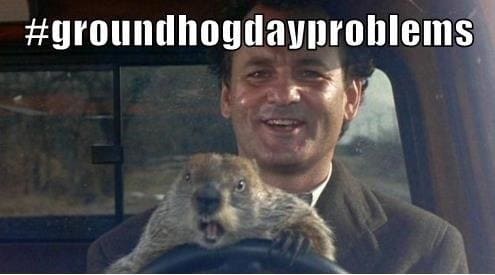
Every year, thousands flock to the birth place of the infamous “Groundhog Day” in Punxsutawney, Pennsylvania to see if the little critter has a shadow or not.
One question begs to be asked about this tiny weatherman and surprisingly is never questioned when Feb. 2 rolls around each year. What exactly is Groundhog Day and why is it celebrated?
In 1887, Groundhog Day was popularized in Punxsutawney by German immigrants when a groundhog was proclaimed as a new weather diviner — he (or she) would tell them whether winter would continue for six more weeks or if spring was on its way. The custom maintained that if the groundhog had a shadow, winter would continue. If no shadow appeared, spring would arrive shortly.
This funny custom derives from the Celtic Pagan tradition called “Imbolc”, a celebration that occurs annually on Feb. 2. The festival celebrates the end of winter at a time where the last of the winter stock was depleted. Families and friends would share their food and enjoy the last days of frigid temperature.
The Catholic Church adopted the tradition in the form of Candlemas, which celebrates Jesus’ first visit to the temple. As with most holidays, it traditionally involves a feast. In Germany, it was customary that the clergy give candles on this holiday and depending on the length of the candles, winter would be longer or shorter.
There are also many song verses that explain if it were sunny on Candlemas, winter would continue and if it were cloudy, spring would come.
“If Candlemas be fair and bright,
Come, Winter, have another flight;
If Candlemas brings clouds and rain,
Go Winter, and come not again.”
We can thank the Germans for determining that the shadow of an animal (specifically a hedgehog) could be used to predict the coming of winter instead of actual weather. Upon immigrating to North America, there were no indigenous hedgehogs on the continent, so German settlers decided the groundhog would be a worthy replacement.
Groundhog Day was an instant hit in North America and remains so to this day. There are tiny parading groundhog weather diviners at several locations across the continent, with a few special rodents in Canada.
Wiarton Willy is the infamous Canadian groundhog, located in Wiarton, Ontario. He is an albino groundhog and spends his days munching on grass and hanging out. He works one day a year and takes his profession very seriously. It is hard work walking out of his den and looking at his shadow — or lack thereof.
Nova Scotia’s Shubenacadie Sam is the resident weather rodent of the east, with the recently deceased, Winnipeg Willow as the western representative. Brandon Bob in Manitoba and Balzac Billy in Alberta are also contenders for the title of chief groundhog.
This year, a weather catastrophe occurred when the groundhogs did not agree on whether or not winter was coming to an end. Wiarton Willy saw his shadow whereas Shubenacadie Sam did not. People were lost on whether to put their winter coats away or not. Punxsutawney Phil put an end to the debate when his shadow did not appear. He remains the number one source for the day.
There is nothing wrong with wishing and hoping for the end of winter. In Canada, it’s what keeps us alive. But, do we really need an overfed groundhog, or an animal of any kind, to tell us what science and meteorologists do every day?
While saying that…their track records are probably the same.
Happy Groundhog Day!

